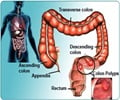Regular aspirin use is found to be linked to a significant increase in the risk of neovascular age-related macular degeneration, states study published in JAMA.

Barbara E. K. Klein, M.D., M.P.H., of the University of Wisconsin School of Medicine and Public Health, Madison, and colleagues conducted a study to examine the association between aspirin use and AMD. The researchers used data from the Beaver Dam Eye Study, a longitudinal population-based study of age-related eye diseases conducted in Wisconsin. Examinations were performed every 5 years over a 20-year period (1988-1990 through 2008-2010). Study participants (n = 4,926) were 43 to 86 years of age at entry in the study. At subsequent examinations, participants were asked if they had regularly used aspirin at least twice a week for more than 3 months. The average duration of follow-up was 14.8 years.
For the study, the researchers measured the incidences of different types of AMD (early, late, and 2 subtypes of late AMD [neovascular AMD and pure geographic atrophy]).
There were 512 incident cases of early AMD and 117 incident cases of late AMD over the course of the study. The researchers found that regular use of aspirin use 10 years prior to the retinal examination was associated with late AMD (age- and sex-adjusted incidence, 1.8 percent for users vs. 1.0 percent for nonusers). When examining the relationships by late AMD subtype, neovascular AMD was significantly associated with such use (age-and sex-adjusted incidence, 1.4 percent for users vs. 0.6 percent for nonusers), but not for pure geographic atrophy. Aspirin use 5 years or 10 years prior to retinal examination was not associated with incident early AMD.
"Our findings are consistent with a small but statistically significant association between regular aspirin use and incidence of neovascular AMD. Additional replication is required to confirm our observations. If confirmed, defining the causal mechanisms may be important in developing methods to block this effect to prevent or retard the development of neovascular AMD in persons who use aspirin, especially to prevent CVD," the authors conclude.
Source-Newswise















